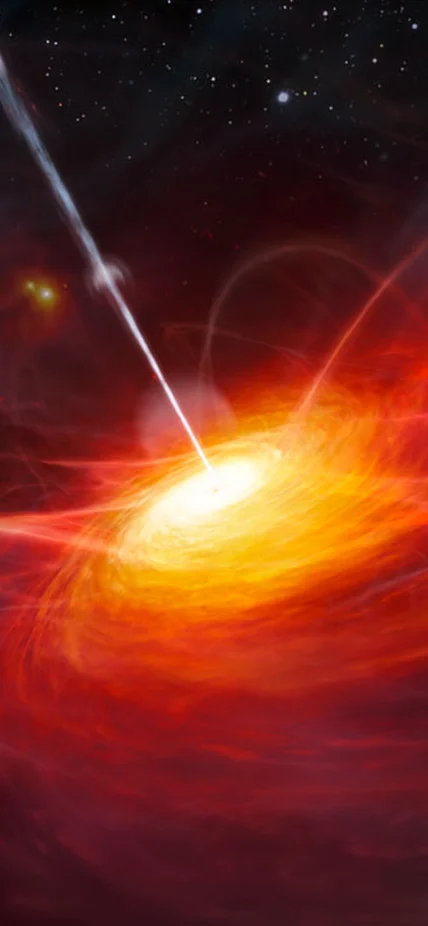Washington, D.C.— Quasars--supermassive black holes found at the center of distant massive galaxies--are the most-luminous beacons in the sky. These central supermassive black holes actively accrete the surrounding materials and release a huge amount of their gravitational energy. An international team of astronomers, including Carnegie’s Yuri Beletsky, has discovered the brightest quasar ever found in the early universe, which is powered by the most massive black hole observed for an object from that time. Their work is published February 26 by Nature.
The quasar was found at a redshift of z=6.30. This is a measurement of how much the wavelength of light emitted from it that reaches us on Earth is stretched by the expansion of the universe. As such, it can be used to calculate the quasar’s age and distance from our planet. A higher redshift means larger distance and hence looking further back in time.
At a distance of 12.8 billion light years from Earth, this quasar was formed only 900 million years after the Big Bang. Named SDSS J0100+2802, studying this quasar will help scientists understand how quasars evolved in the earliest days of the universe. There are only 40 known quasars have a redshift of higher than 6, a point that marks the beginning of the early universe.
“This quasar is very unique. Just like the brightest lighthouse in the distant universe, its glowing light will help us to probe more about the early universe,” said team-leader Xue-Bing Wu of Peking University and the Kavli Institute of Astronomy and Astrophysics.
With a luminosity of 420 trillion that of our own Sun’s, this new quasar is seven times brighter than the most distant quasar known (which is 13 billion years away). It harbors a black hole with mass of 12 billion solar masses, proving it to be the most luminous quasar with the most massive black hole among all the known high redshift quasars.
The team developed a method of detecting quasars at redshifts of 5 and higher. These detections were verified by the 6.5-meter Multiple Mirror Telescope (MMT) and 8.4m Large Binocular Telescope (LBT) in Arizona; the 6.5m Magellan Telescope at Carnegie’s Las Campanas Observatory in Chile; and the 8.2m Gemini North Telescope in Hawaii.
“This quasar is a unique laboratory to study the way that a quasar’s black hole and host galaxy co-evolve,” Beletsky said. “Our findings indicate that in the early Universe, quasar black holes probably grew faster than their host galaxies, although more research is needed to confirm this idea.”
Other co-authors on the paper are: FeigeWang, Jinyi Yang, and Qian Yang, also of Peking University and the Kavli Institute; Xiaohui Fan of University of Arizona and the Kavli Institute; Weimin Yi of the Chinese Academy of Sciences; Wenwen Zuo of Peking University and the Chinese Academy of Sciences; Fuyan Bian of Australian National University; Linhua Jiang and RanWang of the Kavli Institute; and Ian D. McGreer and David Thompson of University of Arizona.
Image Caption: This is an artist's rendering of a very distant, very ancient quasar, courtesy of the European Southern Observatory (M. Kornmesser).
__________________
This work was funded by the NSFC, the Strategic Priority Research Program ”The Emergence of Cosmological Structures” of the Chinese Academy of Sciences, the National Key Basic Research Program of China, and the U.S. NSF.
